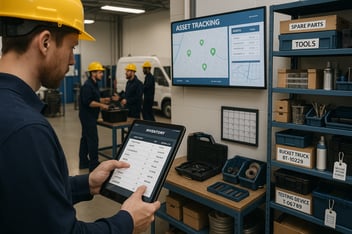
When I speak with leaders across the oil and gas industry, one theme always stands out: managing assets is harder than ever. We’re balancing massive infrastructure investments, stricter regulatory demands, and the constant pressure to keep operations safe, efficient, and profitable. I’ve seen firsthand how aging equipment, unpredictable market swings, and workforce challenges can make even the most well-run organizations struggle to stay ahead.
It’s in these moments that asset management becomes more than a technical function—it’s a strategic differentiator. When we get it right, we extend the life of critical assets, avoid costly downtime, and build resilience for the future. When we don’t, the risks can be severe, from environmental impacts to lost revenue and reputational harm.
The Challenges We Face in Asset Management
1. Aging Infrastructure and Equipment
A lot of infrastructure in our industry has been in service for decades. According to Deloitte, nearly 60% of global oil and gas infrastructure is more than 25 years old. That leads to rising maintenance costs and an increased risk of unplanned downtime. We’ve all seen how failures can mean more than just production losses they can lead to environmental hazards and reputational damage.
2. Regulatory and Environmental Pressures
We’re also operating under tighter regulations and public scrutiny than ever before. Emissions rules, safety mandates, and reporting requirements mean we need to closely monitor and document asset performance. Noncompliance isn’t just costly—it can damage trust with stakeholders and communities.
3. Data Silos and Lack of Real-Time Visibility
Too often, asset data is still stored in spreadsheets, legacy systems, or across different sites. Without a single view of asset performance and lifecycle, decision-making becomes reactive instead of proactive. That’s where solutions like enterprise asset management software come into play, helping us centralize data and get real-time access across the organization.
4. Workforce Skills Gap
We’re also facing a generational challenge. Experienced engineers and technicians are retiring, while new employees expect digital, mobile-first tools rather than paper-based systems. If we don’t bridge that gap with training and modern solutions, we risk losing consistency in how assets are managed.
5. Volatility in Commodity Prices
Finally, the ups and downs of oil and gas pricing impact how and when we invest in assets. It’s common to see maintenance deferred during downturns, but we know that often leads to even higher costs when demand returns.
How We Can Manage Assets More Effectively
Proactive Maintenance and Reliability-Centered Programs
Moving from reactive maintenance to proactive strategies is a must. Predictive analytics, IoT-enabled sensors, and reliability-centered programs help us anticipate failures before they happen. That reduces downtime and cuts maintenance costs. Research shows predictive maintenance can lower expenses by as much as 30%. In fact, we’ve seen how preventive maintenance strategies can extend the lifespan of equipment and increase reliability.
Digital Transformation and Asset Visibility
By implementing field service management software, we gain a single source of truth for asset data. With real-time dashboards, mobile access for field crews, and integration with operations systems, we can align maintenance schedules with business priorities, avoid downtime, and make better decisions.
Standardization and Governance
Another critical step is standardizing processes across sites and regions. When we enforce consistency and governance, we ensure asset data is accurate, accessible, and audit-ready. That not only helps with compliance but also improves operational efficiency.
Workforce Development and Training
Closing the skills gap means investing in training and digital tools. When we equip technicians with mobile workforce management solutions, inspections, reporting, and work orders become faster and more accurate. It’s also a way to attract and retain younger workers who expect technology to be part of their everyday work.
Sustainability and ESG Integration
We can’t ignore ESG. Asset management strategies now need to align with environmental and sustainability goals. Monitoring emissions, improving efficiency, and ensuring reliability aren’t just about compliance—they’re about securing long-term value and maintaining trust with stakeholders.
Final Thoughts
Asset management in oil and gas isn’t just about keeping equipment running. It’s about balancing safety, compliance, efficiency, and sustainability. By embracing digital tools, predictive maintenance, and workforce development, we can overcome today’s challenges and build resilience for the future.
If you’re interested in where this investment pays off, I recommend exploring our guide on maximizing ROI with field service.



